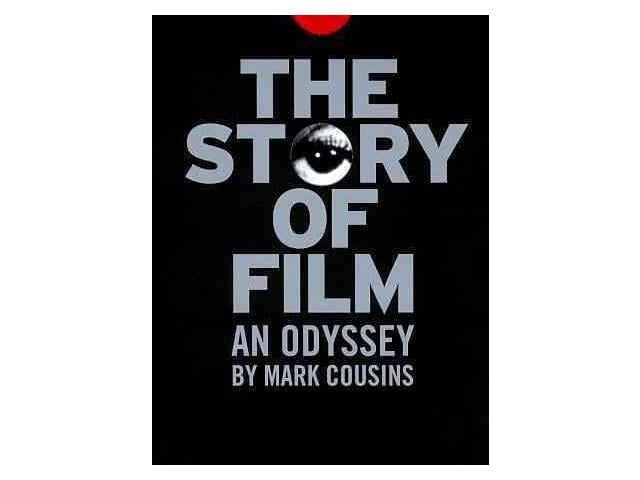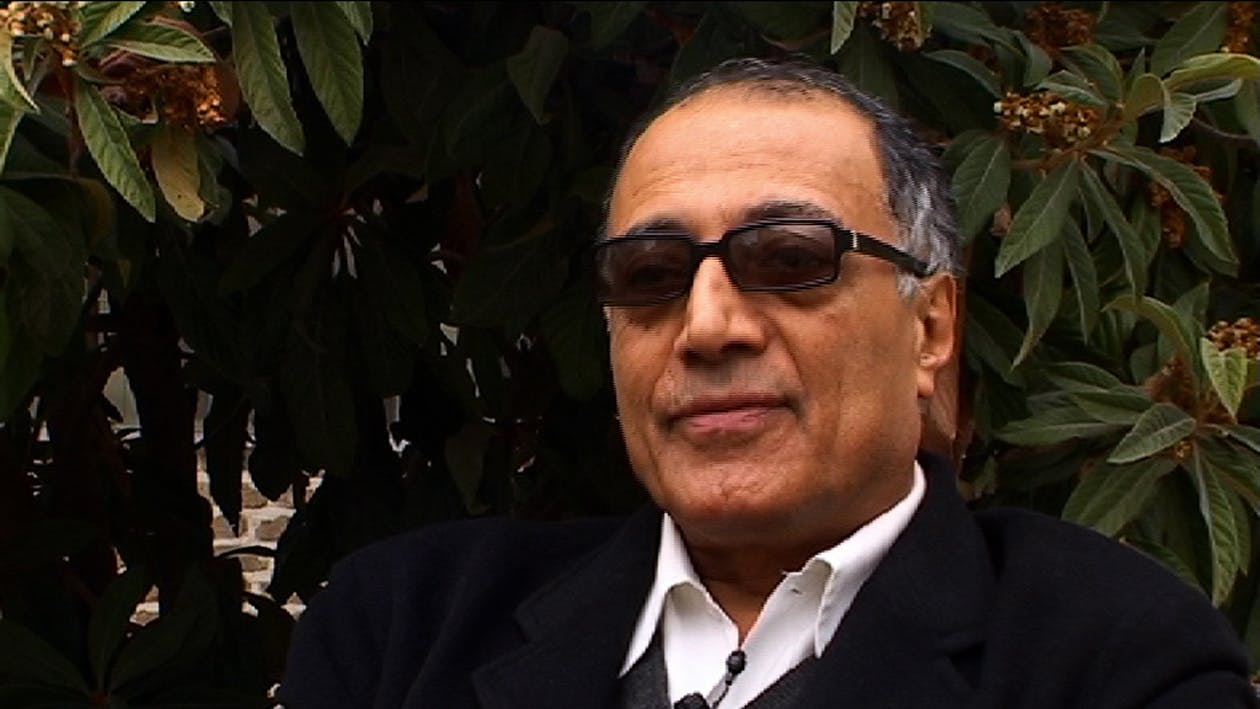The Story of Film: An Odyssey Episode 1-8 Synopsis. Read Full Synopsis Cast + Crew Previous Cast Members More Cast Members. See Full Cast + Crew for The Story of Film. Audience Reviews for The Story Of Film: An Odyssey Dec 05, 2014 Mark Cousins knows a lot about Cinema and did an impressive research, but unfortunately his voice inflection makes it a torture to. The Story of Film: An Odyssey is a 2011 British documentary film about the history of film, presented on television in 15 one-hour chapters with a total length of over 900 minutes. It was directed and narrated by Mark Cousins, a film critic from Northern Ireland, based on his 2004 book The Story of Film. The series was broadcast in September 2011 on More4, the digital television service of UK broadcaster Channel 4.

I recently got through watching a 15 part, 900 minute long 2011 documentary on cinema titled The Story Of Film: An Odyssey, directed and narrated by Irish film critic and historian Mark Cousins, on Netflix, based upon his book of the same name. As might be expected of such a large undertaking, the film has highs and lows. The highs are quite good, but the lows are equally glaring, making the overall project a worthwhile, albeit often draining and droning film series.
The pros are that the film is quite comprehensive, and not restricted to Hollywood nor American/Western filmdom. The Story Of Film: An Odyssey also delves into overlooked technical aspects of the medium, and traces the development of certain editing and narrative techniques, while marking the films and persons most responsible for bringing forward these aspects of the art form. The negatives are that the film often needlessly delves into film school aspects of the art, which means it wholly misidentifies important parts and historical aspects of film. Mark Cousins is quite able as a film historian, but as a film critic he simply has little understanding of the difference between good and bad and great and important films, and his own personal political biases often cloud the production. Most notably, however, the biggest con of the film is the awful decision Cousins made to narrate the film himself, rather than hire a good voice actor.

The problem is not that Cousins’ voice nor Irish accent are bad nor unintelligible, just that he speaks in such slow cadences and oddly formed accentuals, to the point that his slurriness often sounds like he’s drunk or high, and when this occurs as he’s explaining something onscreen, it utterly distracts the viewer from the point he is trying to make, as well as the work onscreen. Tense moments often invoke laughter because Cousins’ tone is so inapt. The reverse occurs, as well.
The 15 episodes deal with these factors:
The Story Of Odyssey
- The dawn of film in the late 19th Century and the factors and art forms that led up to its emergence. We see film techniques emerge, the birth of the first movie stars, and the dominance of women in creative positions before film became big money. Thomas Edison and the Lumiere Brothers are key.
- Film through the Silent Era and the arrival of sound is explored, and this era is not limited to merely American films and big name directors like Charlie Chaplin, D.W. Griffith, and Buster Keaton. King Vidor’s “The Crowd” gets special attention.
- World Cinema’s first burst is explored, with the works of Eisenstein, Lang, and others explored, as well as forgotten movies from the Orient. Expressionism comes under scrutiny.
- The arrival of sound changes the art of film in ways profound and not. Cousins rhapsodizes ridiculously about Alfred Hitchcock (calling him the 20th Century’s greatest image maker) at the expense of far greater filmmakers, but the highlight of this episode is a comparison of the female leads in the 1939 films “The Wizard of Oz,” “Gone with the Wind,” and “Ninotchka.” Cartoons and gangster films are explored.
- The 1940s and 1950s are explored, starting with “Citizen Kane,” and Orson Welles, and wends its way through Hollywood war films and musicals, film noir, as well as Italian Neo-Realism, and ending with the British films of Powell and Pressburger, as well as another Welles film: “The Third Man.”
- Hollywood’s melodramas of the 1950s are in focus, as well are the films of Asian masters like Satyajit Ray, Akira Kurosawa, and Yasujiro Ozu, as well as African director, Youssef Chahine.
- This episode deals with the European cinema of the 1950s, and the explosion of film’s New Wave, from France to Japan. Directors like Federico Fellini, Ingmar Bergman, Jacques Tati, Agnes Varda, Sergio Leone, and Michelangelo Antonioni are at the forefront. Cousins overindulges in the schlockery of Pier Paolo Pasolini as he did, earlier, with the work of Jean Cocteau.
- The 1960s see the New Wave reach America, and such counterculture films as “Easy Rider” and “2001: A Space Odyssey” help finish off the studio system, and pave the way for the rise of the era of the auteur. Aside from America, we deal with Roman Polanski, Andrei Tarkovsky, and Nagisa Oshima.
- “The Graduate” is dissected as a seminal film that changed Hollywood, and the episode also deals with “Taxi Driver,” “Chinatown,” The Godfather films, and the rise of Woody Allen and Blaxploitation films.
- The New German Cinema arrives, as the last wave of the New Wave. The 1970s sees the rise of Win Wenders, Rainer Werner Fassbinder, and, best of all, Werner Herzog. Naturally, Cousins lavishes the most praise on the worst of the trio: Fassbinder, as well as calling “The Conformist” a masterpiece. 3rd Cinema is also focused on.
- The Blockbuster Film arrives in 1970s Hollywood, and signals the shift away from the Director as controller of cinema. Three films in particular herald the end: “The Exorcist,” “Jaws,” and “Star Wars.” Meanwhile Bollywood and Bruce Lee also herald the age of dumbed down film.
- This episode focuses on maverick filmmakers in the U.S. and abroad, starting with John Sayles and Maggie Renzi, and ending with Polish director Krzysztof Kieslowski. Cousins proclaims the 1990s a Golden Age of film.
- I did not get to see this episode because Netflix did not have it available. It was first simply a repeat of episode 10, and then was unavailable for viewing. According to other online sources, the episode focuses on world cinema, from Iran: Abbas Kiarostami, to Japan: Shinya Tsukamoto, to France: Claire Denis, and ending up with a look at Mexican cinema.
- This deals with the 1990s and Hollywood. Quentin Tarantino and the Coen Brothers arrive on the scene, while Paul Verhoeven’s and Baz Luhrmann’s films get far more attention than they deserve. CGI is explored, as are films like “The Blair Witch Project,” and directors like Jane Campion.
- This episode deals with innovation and the films of David Lynch, as well as the rise of Michael Moore and mass media documentaries. Russian director Alexander Sokurov is highlighted. It also focuses on New Korean Cinema, and South American films. An Epilogue deals with the future of film, 35 years after this film’s debut: Cinema in 2046.
In a sense, the film’s strengths are also its weaknesses, for while Cousins is correct in taking a broader view of cinema, and I, and many other viewers, inevitably learnt of films and directors and actors previously unheard of, Cousins takes no real critical stands. He states a film or director or scene is great but never explains why he thinks it so. And when one sees some of the bad but famous directors- Cocteau, Godard who produced his own “Historie(s) du Cinema,” a few years earlier, Bunuel, Pasolini, Fassbinder, he claims greatness for, it makes the series take a big hit. Explaining why a well known film or director is NOT as good as claimed is just as important as explaining why something is great. Only from failures can others learn, but Cousins applies no critical scalpel at all. And, oftentimes, as in surveying the films of Andy Warhol, he simply lets the image play, with no discernment over its import, artistically nor historically. There seems to be no recognition that, despite its visual basis, film is far more a scion of narrative literature than photography. It is literature with pictures — cinemature, rather than photography that adds narrative. Cousins also drones on too often using critical clichés like “the greatest _____ of all time, the most _____ scene in cinema history,” and the like, which is especially galling when the claim is for either a bad or unknown film. Cousins certainly has a right to claim whatever he wants, but concomitant to that right is the necessity to back it up. After all, he wants to convince us of the art’s import.
The Asian influence.

Film The Odyssey
The series does have a bevy of interviews with notables scattered within, but, thankfully, unlike a Burns Brother documentary, these talking heads do not dominate. Among the heads are Kyoko Kagawa, Gus van Sant, Lars Von Trier, Wim Wenders, Abbas Kiarostami, Claire Denis, Bernardo Bertolucci, Robert Towne, Claudia Cardinale, Bernardo Bertolucci, Charles Burnett, Jane Campion, Terence Davies, Claire Denis, Stanley Donen, Abbas Kiarostami, Baz Luhrmann, Paul Schrader, Alexander Sokurov, Robert Towne, Gus Van Sant, Sharmila Tagore, Haskell Wexler, and Yuen Woo-Ping.
Story Of Film An Odyssey Watch Online
Overall, The Story Of Film: An Odyssey is a recommendable work, especially if viewed as a primer, an entry point. Doubtlessly, a good filmgoer will see through many of Cousins’ egregious biases, but he recommends so much previously unrecognized material that his biases are minor, at worst. As for the horrid narration . . .?

